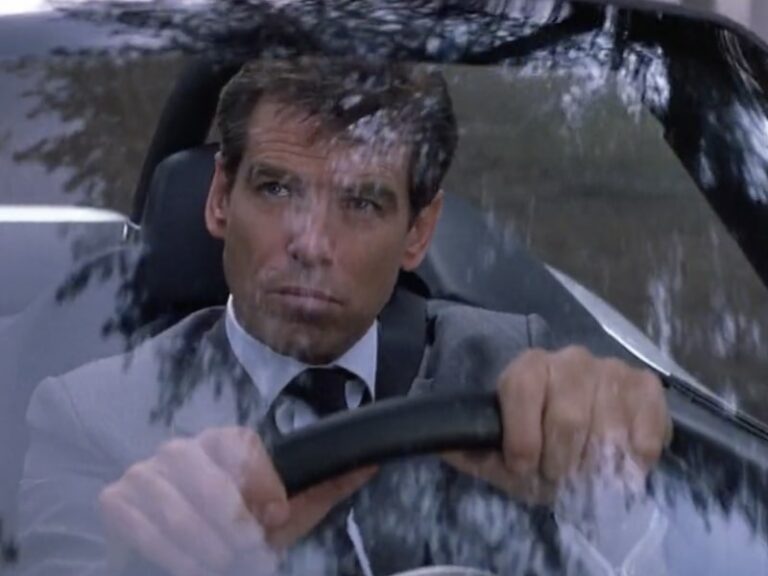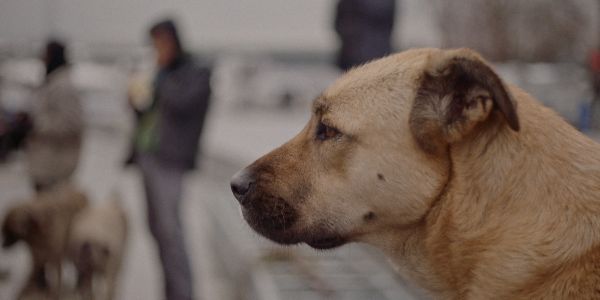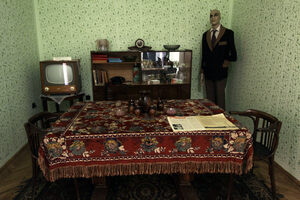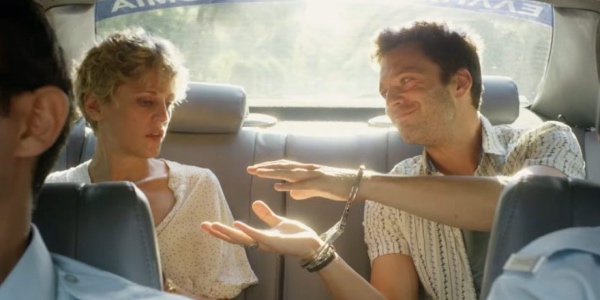Interview With Mark Ricker, Production Designer Of MA RAINEY’S BLACK BOTTOM
Ma Rainey’s Black Bottom, the second stage play from August Wilson and, coincidentally, the second of which Denzel Washington has helped bring to the big screen, has now released on Netflix. Featuring the final performance from the late Chadwick Boseman and having made it to the top of President Barack Obama’s list of 2020 films, the production appears to be at the top of the streaming service’s Oscar race.
Set in Chicago shortly before the Great Depression, the film follows the titular “Mother of the Blues” (Viola Davis) as she scrapes her way through a recording session. With a steady stream of demands and an overall lack of patience, Ma Rainey may not be making things any easier, but no one can say she isn’t in control. On this particular day, however, tensions between her and her ambitious horn player (Boseman) start to boil, and by the time needle has lifted, neither life will be the same again.
Film Inquiry recently spoke with production designer Mark Ricker (Trumbo, The Help) about his experiences working on the film, including his collaboration with director George C. Wolfe, as well as his approach to designing and manipulating physical environments.
This interview has been edited for clarity.
Luke Parker for Film Inquiry: Everyone involved at the top of this production seems to have a deep, longstanding connection with August Wilson’s work. While designing the sets, how did you and the production team decide which elements of the stage play you were going to keep for the film, and which you were going to build upon?
Mark Ricker: Well, it’s interesting because I never read the stage play and I sort of did that, to a degree, on purpose. I just wanted to react to the script that I was given and the film that we were making. My understanding was that for obvious reasons, the stage play took place mostly in the band room and the recording studio. But the elements that were expanded for the film were the street outside, and the tent, and the theater, and some other bits that opened it up some.
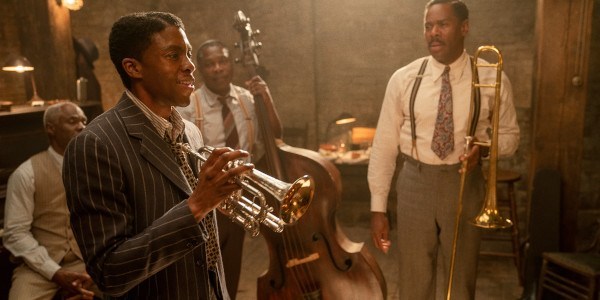
But I really did stay away from reading any kind of stage directions or looking at any previous set designs. I mean, it’s sort of impossible not to glance here or there but in terms of working with George and figuring out what we wanted the two rooms to be in the film, it started with general research on what factories and recording studios looked like and went from there. We did ground plans and figured out the way that we would want to flow through the spaces.
I’m surprised to hear you didn’t reference the stage play at all. What led to that decision?
Mark Ricker: I think I just wanted to design it in a way that I would any film. The words in the script were the words that I was given, and the action that we were given is what I ran with. I knew that the stage play was in those two rooms, and I just started doing research and thought processes about how those rooms would be expanded, how we’d see the outside world in a way that you wouldn’t with the play. So the literal architecture of what we were looking at – the beams at the base of the room and the things that would have come from the architecture of that – are what we expanded on that wouldn’t necessarily have been in the play.
I think I just wanted to start fresh and work with George and just design it the way I typically would.
From what I understand, you were originally set to shoot on a location but had to make a last-minute transition to a sound stage. What changes had to be made to your plans during that transition?
Mark Ricker: You know, the plan was actually always to build those two sets. I think because of budget and time, I found a venue that I presented to George as a possible shooting location for the band room. I’ll say that one of the things that terrified me about doing the job was the notion that so much of the action took place in these two stifling rooms.
And so, I saw this fantastic old bourbon barrel warehouse that had these timbers and heights. I thought that in order to spend this much time in that room, we’d want it to be large and expansive and a place where characters could disappear in the shadows. There was all of this interesting stuff there: the lines, the timbers, the beams, and whatnot. I took George there – it was our very first day of scouting locations – and he saw what I saw that was of interest, but he honestly thought it was too much. He thought it would distract from what he wanted the film to be, so we just stripped it back and stripped it down and made it smaller and smaller and smaller until, quite honestly, I thought, “I hope he knows what he’s doing” because it ended up being a very small room that we were shooting in. But we put every effort into making that room as interesting as we could, and that’s where we landed.
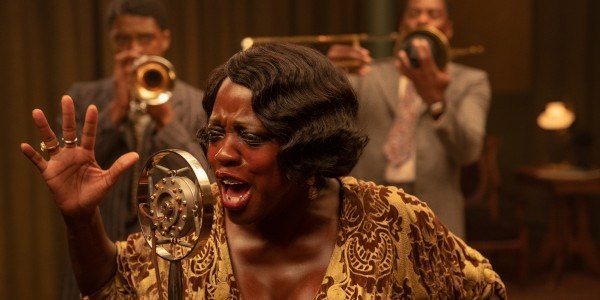
So it was a fascinating process to work with George and to start in one place and really listen to him to understand what he wanted. It wasn’t necessarily where I would normally go but I really used it as a gigantic learning experience. It was a joy.
You’ve said the sound stage was more flexible creatively. Can you elaborate on that? What did that space allow you to do?
Mark Ricker: Since we designed it all from scratch, we could give it the exact shape, height, and color tone we wanted. We designed it in its entirety, so that’s where I was able to run with complete freedom. When we had an exterior, that defined the interior somewhat. For example, we had to build the alleyway first and fast because that helps dictate what the shapes of the interior spaces would be. So once we had that, then I was able to know where the corners were and could run off of that.
Anytime you design something on stage and can make it what you want, there is a joy in that. Locations are great too, but with that, you just have to find the right one. But with the amount of time we were spending in those two rooms, it just made sense to build them as stage sets anyway because then we just have complete control over them in terms of sound and hours and all of that.
In the same vein as Fences and a wide number of stage plays, most of the action here takes place in one location: the recording studio. When you’re confined primarily to one place, what do you do to ensure that place has enough character to stand on its own?
Mark Ricker: That was the great challenge of this and when I took the job, I knew it would be the thing I’d really have to figure out. For the band room, in terms of working with George and figuring out what he wanted, we landed on the smaller size because he wanted it to feel like a boxing ring. So we had these four timber posts in the corners which helped define that conflict.
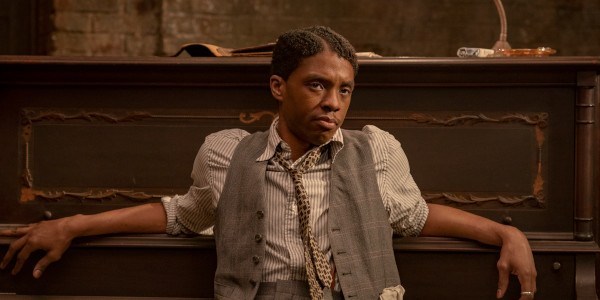
But outside of that, we dealt with very interesting brickwork to try and give the band room a texture and an authenticity, something that would be interesting to spend time in. Then with the studio, I was looking at where to put architectural lines that made it interesting for the viewer to be in that room for the amount of time that they were there. It was just having texture everywhere. That sounds like a simple thing, but I really rode the crew hard to get the right materials in there and the right scenic work to create an interesting space in terms of shadow and light. We also wanted a lot of variety in how the light came in.
Interestingly, the band room was written as a room that had no windows. And for a while, it was a challenge to find a cinematographer who felt comfortable in that. Tobias [Schliessler] and I sort of conspired to convince George to put a window in that room, and eventually, we did. But there is a sense of how light comes in and what light means, particularly as it moves through space over a couple of hours. So it’s just a process of finding those moments that are going to serve the story, serve the space, and be interesting for people to spend time in watching the film.
Film Inquiry would like to thank Mark Ricker for taking the time to speak with us.
Ma Rainey’s Black Bottom is available to stream on Netflix now!
Watch Ma Rainey’s Black Bottom
Does content like this matter to you?
Become a Member and support film journalism. Unlock access to all of Film Inquiry`s great articles. Join a community of like-minded readers who are passionate about cinema – get access to our private members Network, give back to independent filmmakers, and more.
Join now!
